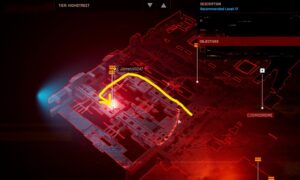In today’s technologically advanced world, the use of devices like smartphones has become a crucial part of our everyday lives. In fact, the number of people who own smartphones has risen from 0.9 billion in 2011 to 2.8 billion in 2017. This staggering increase in the use of digital devices in our personal and professional lives has made the transmission of important facts and information via a process known as “gamification“, one of the most effective ways to get people to learn new skills.
Visual learning materials like PowerPoint presentations can be tedious to create and monitor, since you have to spend time identifying the right pictures to use, and then tag those pictures with relevant keywords. Wouldn’t it be easier if you could just put those pictures in a database, and then just upload the those pictures into your slides? This is where QR codes come in: they are codes that you can just feed into a smartphone or tablet to automatically populate your PowerPoint image database with the pictures you need. Of course, you can use QR codes to do a lot more than tell your PowerPoint presentation to show pictures of cats, so I’ll run down some of the more useful uses for QR codes.
Do you use QR Codes, or QR Codes, in your Visual Learning Materials? If so, then you might want to take advantage of the fact that QR Codes are a visual method to communicate information and store content. But how do you use them? This article explains what a QR Code is, why they are useful, how to generate them, and how to add them as interactive content to your Visual Learning Materials.
The use of technology in education is growing more common as educators continue to upgrade their tools in order to maintain high levels of pupil engagement. Learners and teachers can be more engaged if they can learn while having fun with technology in regulated learning activities. Learners can improve their technological skills by incorporating technology into their instructional resources.
QR technology is a new simple tool that has attracted educators’ curiosity since it can help them integrate technology into their instructional materials more easily. Learn how to use QR codes to make your visual learning materials more engaging.
What is a QR code and how does it work?
A QR Code, or Quick Response Code, is a two-dimensional barcode that converts data into a series of patterns with three eyes producing a square image. A QR code may be scanned with a smartphone camera, directing scanners to the data encoded on the code.
Creating QR codes has become significantly easier now that an online QR code generator with a logo is accessible.
4 fun ways to use QR codes to make your visual learning materials more gamified
With the evolution of mobile technology, QR Code technologies have opened up a vast terrain for educational purposes. Teachers can utilize QR codes in a variety of ways to help their pupils study more effectively. Check out some innovative ways to use QR codes in visual learning materials.
Make QR codes for interactive games that may be played both online and offline.

On the internet these days, you may find a range of interactive games that are suitable for educational purposes. There are games for spelling and vocabulary, math, history, the global map, and other interactive activities that help with comprehension. The use of games in the learning materials improves the lesson’s engagement and enjoyment.
Allow your students to quickly access a specific game by just supplying them with a QR code. Always use a reputable online QR code generator to create a QR code that includes the Play Store and App Store URLs so that students can easily access and download them. Some games do not require downloading because they are accessible via their websites; produce QR codes using the URLs.
To organize identifying and matching exercises, use QR codes.

In any classroom, identifying and matching exercises are commonplace. Use QR codes to give learners a different perspective on this activity.
In this activity, learners must encode definitions into QR codes and then match them to the terms they’ve recognized. Images, in addition to textual, are useful for providing a more visual view. To do so, teachers can utilize an image QR code to record visual representations of the technology-based exercises they use.
Make a QR code for the Quiz Bee Race.
Teachers can either write the questions on the board or read them aloud during this game. The first student to offer the proper answer will advance one step, and the first person to cross the finish line will win.
Students will scan a QR code on the board utilizing QR technology, and a question will appear on their phone screen. Until one of the students crosses the finish line, the teacher will continue to display QR codes.
In Memory Games, QR codes are used.

This practice can be done using a variety of materials. Images of things, forms, colors, numbers, and other pertinent materials may be used by teachers.
After integrating these things into QR codes, students must arrange the QR codes in two columns and pair them with the same image content. This game can be played solo or in groups. The student or group who pairs the QR codes correctly first wins.
Conclusion
QR codes are a great tool to have in a teacher’s toolbox. Keep in mind that technology should only be used for educational purposes. It can help you engage students in a lesson, improve students’ technology abilities, and make classroom activities more fun.
QR codes can harness the excitement of technology for the purpose of effective education when used within safe and specialized frameworks. They can utilize an online QR code generator with logo to produce customized and subject-specific QR codes to improve their visual teaching methods.
If you’re a teacher, librarian, student, or anyone else who works with visual learning material, you’ll know that learning is about more than just “knowing” information. You have to be able to recall what you’ve learned, and be able to apply what you’ve learned in a new situation. Visual learning material is one way to address this challenge by using the power of human-readable codes.. Read more about how can you integrate the qr code in your lesson? and let us know what you think.
{“@context”:”https://schema.org”,”@type”:”FAQPage”,”mainEntity”:[{“@type”:”Question”,”name”:”How do you integrate QR codes in lessons?”,”acceptedAnswer”:{“@type”:”Answer”,”text”:”
I can integrate QR codes in lessons, but the process is a little more complicated than just adding them.”}},{“@type”:”Question”,”name”:”How do I create a dynamic QR code?”,”acceptedAnswer”:{“@type”:”Answer”,”text”:”
You can create a dynamic QR code by using the following steps:
1. Create a text file with your desired QR code in it.
2. Open up the terminal and type qrencode -f qr-codes/qrcode.txt
3. Type qrencode -s 1×1 –font=monospace –outfile=qr-codes/dynamic_qrcode.png
4. Type cat q”}},{“@type”:”Question”,”name”:”How do I create a QR code for my inventory?”,”acceptedAnswer”:{“@type”:”Answer”,”text”:”
To create a QR code for your inventory, open up the game and go to the pause menu. From there, select Create QR Code.”}}]}
Frequently Asked Questions
How do you integrate QR codes in lessons?
I can integrate QR codes in lessons, but the process is a little more complicated than just adding them.
How do I create a dynamic QR code?
You can create a dynamic QR code by using the following steps: 1. Create a text file with your desired QR code in it. 2. Open up the terminal and type qrencode -f qr-codes/qrcode.txt 3. Type qrencode -s 1×1 –font=monospace –outfile=qr-codes/dynamic_qrcode.png 4. Type cat q
How do I create a QR code for my inventory?
To create a QR code for your inventory, open up the game and go to the pause menu. From there, select Create QR Code.
Related Tags
This article broadly covered the following related topics:
- using qr codes in the classroom
- fun ways to use qr codes
- write down how you can use the qr code in your lesson design.
- the use of qr code in my lesson design
- how is the qr code utilized











